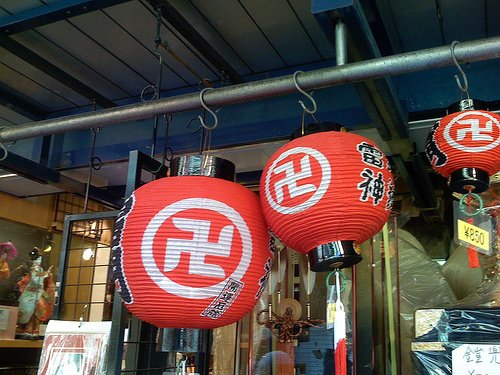Happy Halloween from J-List. Halloween is one of those “American” holidays (although originally Irish and Scottish) that has a way of working its way around the world, and although Japan doesn’t exactly need an excuse to engage in cosplay, what with their strong tradition of dressing in anime costumes and all, awareness of October 31st grows here year by year. Raising kids who are part of two countries has always been a challenge for my wife and I since we want them to really be a part of both, which means (on the American side, at least) having a cultural awareness of things like trick-or-treating and Scooby Doo and being able to sing the School House Rock songs (they can). So we’ve gone out of our way to make trips to the U.S. for Halloween and Thanksgiving, not on our regular travel schedule, although it was a lot easier to do when the kids were small and didn’t have the pressure of school to deal with. This year we decided to be traditional, and carved a (fairly ugly-looking) Jack-o’-lantern. We had a bit of culture shock when I asked my mother-in-law for a candle to put inside the pumpkin: the only ones she had in the house were the long candles for lighting at the family’s Buddhist altar in remembrance of the dead…which is actually closer to Halloween’s original meaning, if you think about it.

Ramen is one of the most famous “Japanese” foods around, although its history in Japan isn’t very long, having been imported from China in the Meiji Era. While instant ramen has proven to be a revolutionary product, allowing the cost of a meal to brought way down in price, readers who have never enjoyed “real” ramen in a good restaurant are missing out. The basic type of ramen familiar to most people is shoyu, made with a soy sauce-based soup, although there are other varieties, including “salt” (a clear soup sold under the tastier-sounding “chicken” moniker in the West) , “tonkotsu” (white “pork bone” broth), and sura-tanmen (think “sweet n’ sour ramen”). Another popular type of ramen is miso, the delicious soy bean curd that my mother thought was peanut butter when she saw it, which is one of the “meibutsu (famous things) of Sapporo in Hokkaido. Right now, the Sapporo Ramen Company is running a commercial featuring a beauty pageant in which different brands of ramen compete in for the title of “Miso Universe,” a great tribute to the current Japanese Miss Universe.
One constant source of fascination and confusion for me since coming to Japan has been trying to understand Japanese women. Like the country itself, they’re incredibly complex, and can just as easily delight you as leave you scratching his head in confusion. First, Japanese females generally tend to be calm, cool and good at planning ahead. Sometimes (from the standpoint of my over-exuberant American self) they can seem rather emotionless, and the thought has occurred to me that I know what it’s like to be married to a Vulcan from Star Trek. “Lack of spontaneity” is another label you could apply to most Japanese females I’ve known: when I went to Europe I brought a backpack, a Lonely Planet book and a credit card and played everything else by ear, which shocked my wife, who so loves to plan every minute detail of a vacation ahead of time. I’ve mentioned before that Japanese females often seem to have problems with constipation, which no doubt arises from eating rice three meals a day. Japanese females also seem to be subject to chills, and the Totoro Lap Blankets made by Sun Arrow are no doubt used by more than a few OLs (“office ladies,” i.e. female company employees) trying to stay warm with the air conditioning on around them. Japanese females often seem to have some rather strange and inexplicable fetishes. For example, several women I’ve known have loved pulling my chin hairs out by the roots, and have begged me to not shave for a few days so that they could rip my hairs out with tweezers — totally bizarre. Although they can be confusing to men, learning a little about the care and feeding of Japanese females can certainly have its rewards.















